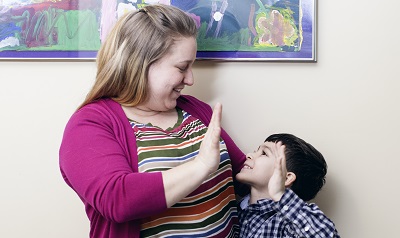Survivor Leader Alida Tchicamboud discusses her advocacy work and the importance of shelter and affordable housing for survivors of domestic violence.
Alida is a domestic violence advocate, Survivor Leader at Sanctuary for Families, and founder of Healing Hands International, a non-profit organization dedicated to supporting victims of Domestic Violence.
—
Last week, I testified to the New York City Council about my experience in a domestic violence shelter and the challenges other survivors face in the shelter system when looking for affordable housing.
I am so excited to have been quoted in this article about a city council hearing I testified at alongside Helen Rosenthal, a Council Member and chair of the Committee on Women and Gender Equity:
“Some of the issues raised by the Council members were echoed by survivors who testified as well. Alida Tchicamboud, a survivor leader at Sanctuary for Families, a domestic violence survivor service provider, emphasized how the city’s shelter system saved her life. But there were hurdles along the way, she explained. ‘It seems like the system works against survivors, especially for single women with dependent minor children, by forcing them to go back into the cycle of lifetime public assistance,’ she said.”
I am also appreciative of Council member Brad Lander who tweeted my intervention and qualified it as “Smart & courageous”
Smart & courageous testimony @NYCCouncil today from Alida Tchicamboud, survivor leader with @sffny, about what NYC should do to better support survivors of domestic and gender-based violence in getting free of abusers, healing, and finding housing. pic.twitter.com/8jlMhywa85
— Brad Lander (@bradlander) September 24, 2019
By sharing my experience, thoughts and opinions, I encouraged HRA to take action where needed. I believe that my suggestions carry a lot of weight and I hope that it will influence policy decisions, because it is without a doubt that survivors of domestic violence need:
- At least one year stay in transitional shelters to build themselves first
- Imperatively an increase of the City vouchers every year to match the rent stabilization guidelines
- Building more affordable permanent housing units with survivors of domestic violence as the top priorities to occur those facilities
- Trauma-focus approaches while exiting shelters…
—
There are many ways to get involved in the effort to support survivors of domestic violence.
IN THE WORKPLACE
Domestic violence is not a “personal” issue, because it has no boundaries, it does not stay home. Approximately 60% of adults in the U.S. work, so chances are that in a given workplace, many employees are victims, perpetrators, or have a friend or family member who is a victim. Employers have to prepared to deal with domestic violence. Below are some ideas that can be explored in the workplace:
- Educate yourself on the subject
- Review the Employee and Family Assistance Plan (EFAP) services if you have them, to ensure that they identify services related to exposure to trauma and offer options and resources available to victims
- Train managers and supervisors on how to recognize and respond to signs of domestic violence / how to address related issues such as privacy and confidentiality
- Leaders should help and not judge and show concern for employees well-being
- Build awareness because domestic violence is not always “visible”
- Managers, don’t discriminate allow victims to take the time off to appear in court, apply for a protection order or seek medical attention…
I advocate to help survivors get the help they need to build a new future. Do you advocate?



